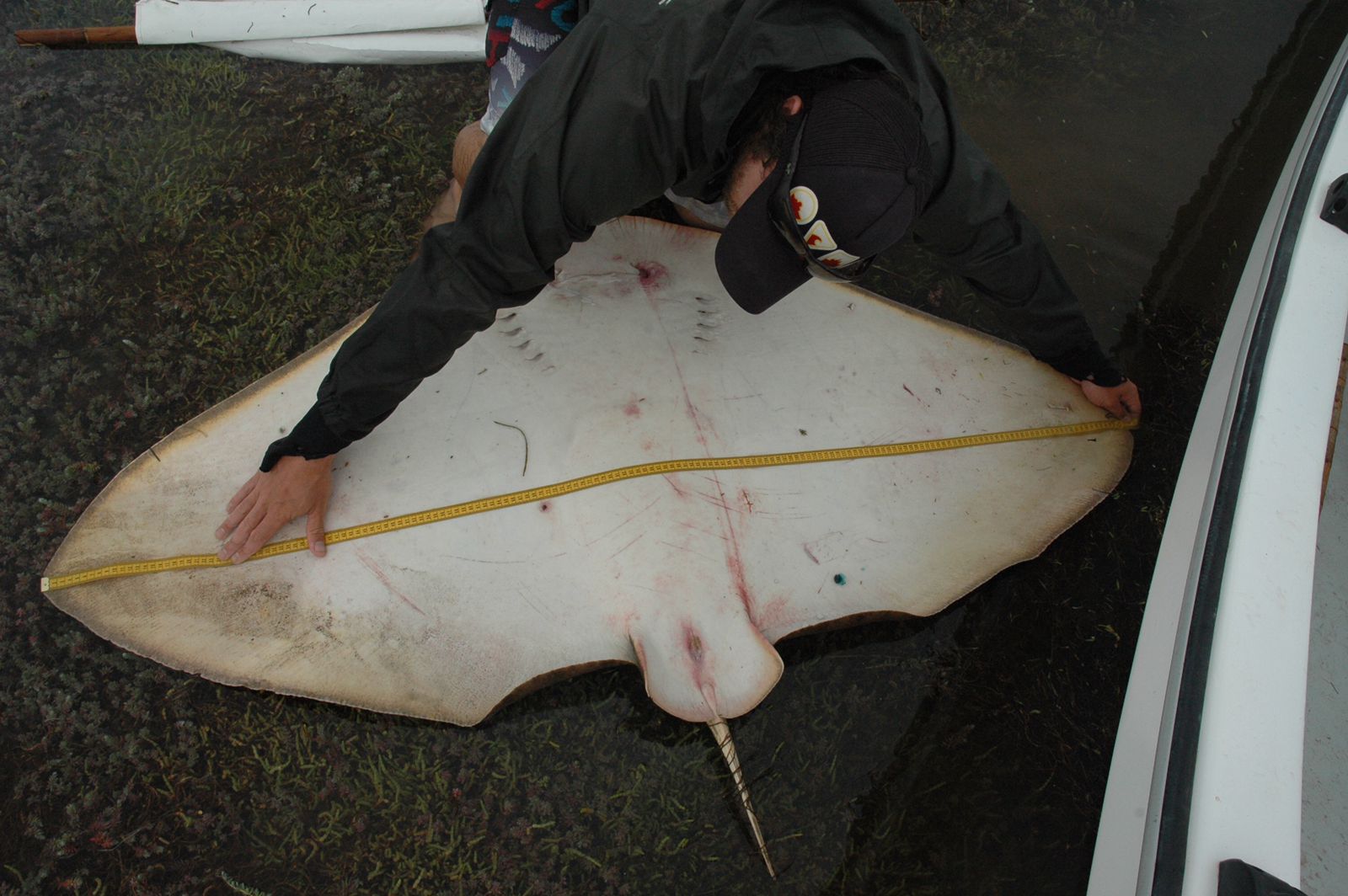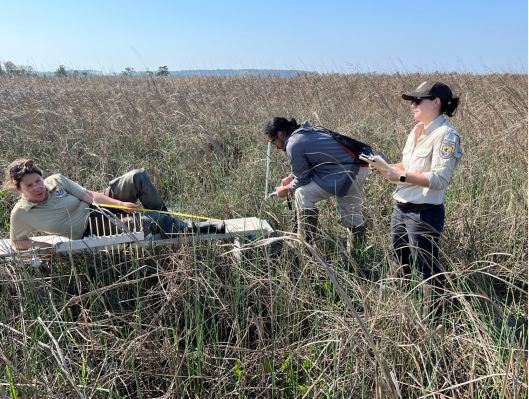- About
- Affiliates
- Join
- Publications
- Estuaries and Coasts
- CERF's Up! Quarterly Bulletin
- Coastal & Estuarine Science News (CESN)
- CERF-Lit
- Advertising
- Programs & Events
- Inclusive Culture
- Communities
Coastal & Estuarine Science News (CESN)The mission of Coastal & Estuarine Science News (CESN) is to highlight the latest research in the journal Estuaries and Coasts that is relevant to environmental managers. It is a free electronic newsletter delivered to subscribers on a bi-monthly basis. Sign up today! 2023 Issue 5Table of ContentsWater Releases from Dammed Rivers Can Help Save Estuaries Water Releases from Dammed Rivers Can Help Save Estuaries Enhancing ecosystem health and services in low-inflow estuaries More than half of the world’s large river systems are now affected by dams. These alterations in freshwater inflow will be further aggravated by climate change-induced variations in rainfall, which threaten the health and functioning of estuaries downstream. Low-inflow estuaries, which often occur in arid and semi-arid regions, are particularly vulnerable. Releasing freshwater from upstream dams as part of an environmental flow regime could be a useful approach for restoring these systems. Using existing literature, researchers reviewed 11 case studies spanning 4 continents to investigate the responses of low-flow estuaries (along with the habitats they support) to dam releases and the human benefits that accompanied them. Overall, water releases from dams improved downstream estuaries in multiple ways. Successful releases kept the estuary mouth open, ensured mixing, facilitated a salinity gradient, and provided maximum fish and invertebrate recruitment from the sea into the estuary. Baseflow inputs ensured ecosystem connectivity and maintained estuary water quality gradients; flow pulse releases in certain seasons stimulated spawning migrations of fish between freshwater and estuarine habitats. They also improved ecosystem services such as fishing opportunities. The timing of water releases mattered: Releases that most closely mimicked natural conditions (such as occasional floods and droughts) created the best increases in functional habitats. However, this requires further studies on key species, understanding their life cycles, and matching them with pulses of water from dams. Other factors the team found to be important in successful releases include the ongoing engagement of communities and stakeholders and cooperation between multiple agencies with competing water uses. The authors conclude that freshwater releases from dams should be considered an important restoration action—as long as adaptive management and long-term monitoring approaches are used to improve both ecological health and societal benefits. Source: Adams, J.B. et al. 2023. Water Releases From Dams Improve Ecological Health and Societal Benefits in Downstream Estuaries. Estuaries and Coasts. DOI: 10.1007/s12237-023-01228-4 Tagging Rays in South African Estuaries Female rays return to the same estuary for several years
Six rays (4 diamond and 2 bull rays, all female) were recorded, with 5 individuals detected in the Breede Estuary for up to 6 consecutive years. They also displayed seasonal philopatry, returning during austral spring to autumn months (September to May), with a marked absence during winter. Their presence in the estuary was influenced by temperature, tides, and time of day: Rays seem to avoid cold water, and detections in the lower estuary and in adjacent marine areas peaked at night, while detections in the upper estuary peaked around dawn and dusk. Though their use of the estuary may be linked with reproduction, this is difficult to confirm. The study suggests estuaries can be an important and previously overlooked habitat for ray populations here, where they likely play key ecological roles seasonally. These finding also helped identify seasons and times of day when fishing and other anthropogenic activities could severely and disproportionately impact portions of the population, and should be minimized. Because estuaries can be places of low trophic complexity, predators like rays are expected to exert a direct influence on the entire ecosystem. Source: Elston, C. et al. 2023. Female Diamond Rays Gymnura natalensis and Bull Rays Aetomylaeus bovinus Display Seasonal Philopatry to South African Estuaries. Estuaries and Coasts. DOI: 10.1007/s12237-023-01239-1 Image: A diamond ray being measured / JD Filmalter How Will Marsh Elevation Respond to Sea–Level Rise? Data from 9 years and 19 wildlife refuges along the South Atlantic
Over the course of the study, the rates of surface elevation change and accretion were highly variable among monitoring sites and varied with wetland type, land surface elevation, and estuarine salinity and geomorphology. While most sites gained elevation (except for pocosins), only 6 were considered resilient—gaining net elevation relative to long-term rates of SLR. And only 2 NWRs (both oligohaline marshes) were gaining in net elevation. The authors recommend conservation and protection strategies focus on building vertical elevation capital, protecting horizontal transgression spaces upslope and upriver, or creating new habitats inland. The conservation of oligohaline marshes is especially critical: They are predicted to experience net losses, represent one of the key upriver transgression spaces for salt marshes in the future, and currently have the potential to keep pace with SLR. Additionally, forested wetlands and pocosins represent the future transgression space for upslope migration of coastal marshes. By thoroughly weighing the costs and benefits associated with various strategies, managers might find that the best future for some habitats is to accept ecological transformations, rather than resist or even direct them. Some types of coastal wetlands, for example, have demonstrated resilience through positive feedback loops that occur between wetlands and rising water levels. Source: Moorman, M.C. et al. 2023. Will They Stay or Will They Go — Understanding South Atlantic Coastal Wetland Transformation in Response to Sea‑Level Rise. Estuaries and Coasts. DOI: 10.1007/s12237-023-01225-7 Image: Surface elevation table monitoring apparatus in ACE Basin NWR / Michelle Moorman Predicting How Species Respond to Both Climate Change and Restoration Effects Will Florida Bay be a template or a cautionary tale? How will the expected changes from a multi-billion-dollar ecosystem-scale restoration effort interact with sea-level rise due to climate change? Florida Bay is an ideal test case. This large and shallow estuary, an important nursery habitat for a variety of fisheries, has been deprived of the freshwater it historically received. Restoring freshwater flows to reduce salinity and improve seagrass diversity and resilience across the bay is the central goal of the Comprehensive Everglades Restoration Plan (CERP). To predict how Florida Bay nekton species will respond to the coupled effects of climate change and hydrological restoration efforts, researchers modeled how changes in the spatial availability of habitat affects the distributions of 28 species and functional groups under both current conditions and those projected for 2060. The most common drivers of suitable habitat impacting the fisheries are (in order): salinity and salinity variability, water depth, water temperature, distance to mangroves, and seagrass coverage. The model also revealed that potential sea-level rise drives the biggest reduction in habitat suitability that cannot be counteracted with an increase in freshwater inputs. However, localized increases in freshwater flows can still improve future habitat suitability for a substantial number of species. Additionally, the team was able to distinguish between and list the species favored or negatively impacted by different levels of those predictor variables. For example, while increased water depths bode well for large predators (ex. common snook, great barracuda), their prey (ex. bay anchovy, goldspotted killifish) will be negatively impacted by rising sea levels. These species-specific impacts and changes predicted by the model could help ensure management strategies are designed appropriately to best achieve the desired results for the future of the Florida Bay ecosystem. Source: Smith, M. et al. 2023. Species Distributions in a Changing Estuary: Predictions Under Future Climate Change, Sea‑Level Rise, and Watershed Restoration. Estuaries and Coasts. DOI: 10.1007/s12237-023-01219-5 |

 Rays around the world are threatened with extinction, and understanding how environmental conditions influence their movement and habitat use is vital for their conservation. Estuaries can be important habitats where rays impact prey populations, assist in the turnover of sediment through their bioturbative feeding behavior, and possibly connect the food webs of marine and estuarine environments. To better understand their reliance on estuaries in South Africa, researchers caught and surgically implanted acoustic transmitters into the abdomens of 33 endemic diamond rays (Gymnura natalensis) and 25 critically endangered bull rays (Aetomylaeus bovinus) beginning in 2016. The rays were tracked through 20 estuaries along 2,200 kilometers of coastline using a nation-wide network of acoustic receivers.
Rays around the world are threatened with extinction, and understanding how environmental conditions influence their movement and habitat use is vital for their conservation. Estuaries can be important habitats where rays impact prey populations, assist in the turnover of sediment through their bioturbative feeding behavior, and possibly connect the food webs of marine and estuarine environments. To better understand their reliance on estuaries in South Africa, researchers caught and surgically implanted acoustic transmitters into the abdomens of 33 endemic diamond rays (Gymnura natalensis) and 25 critically endangered bull rays (Aetomylaeus bovinus) beginning in 2016. The rays were tracked through 20 estuaries along 2,200 kilometers of coastline using a nation-wide network of acoustic receivers. Given the uncertain future of coastal wetlands due to sea-level rise and subsidence, the U.S. National Wildlife Refuge (NWR) System monitors their potential resiliency by tracking coastal wetland surface elevation change in refuges across the South Atlantic. Using surface elevation tables and marker horizons, researchers sampled 22 sites across 19 NWRs in North Carolina, South Carolina, Georgia, and Florida from 2012 to 2021. These spanned 4 priority habitats: oligohaline marshes, salt marshes, forested wetlands, and pocosins.
Given the uncertain future of coastal wetlands due to sea-level rise and subsidence, the U.S. National Wildlife Refuge (NWR) System monitors their potential resiliency by tracking coastal wetland surface elevation change in refuges across the South Atlantic. Using surface elevation tables and marker horizons, researchers sampled 22 sites across 19 NWRs in North Carolina, South Carolina, Georgia, and Florida from 2012 to 2021. These spanned 4 priority habitats: oligohaline marshes, salt marshes, forested wetlands, and pocosins.